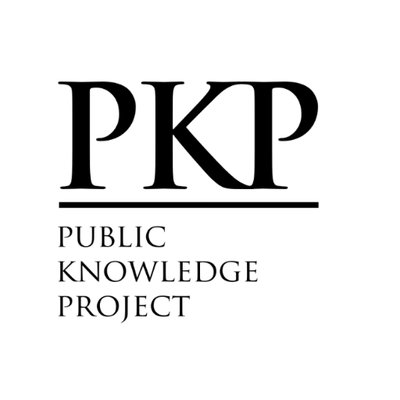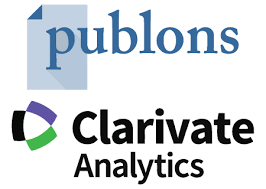Le développement du système financier influence-t-il le niveau de l’inflation?
Une étude critique
DOI :
https://doi.org/10.59051/joaf.v14i2.637Mots-clés :
Système financier, inflation, GMM en système, performance, effets de débordementRésumé
Objectif : L’objectif de cet article est d’examiner l'effet du développement financier sur l'inflation dans la Communauté Economique et Monétaire de l’Afrique Centrale.
Méthodologie : Nous faisons recours à un GMM en système comme stratégie empirique, en se servant des données extraites des bases de la BEAC et de la WDI sur la période 1996-2022.
Résultats : Les principaux résultats de cette étude montrent que malgré le faible niveau d'inflation observé dans la Communauté Economique et Monétaire de l'Afrique Centrale, le risque de crédit associé à l'activité d'offre de crédit augmente l'inflation. Cette augmentation de l'inflation réduit la performance du secteur financier. Cette étude montre également que le développement financier est un déterminant de l’inflation.
Originalité de l’article : L’originalité de cet article tient au fait que la banque centrale doit appréhender le développement financier comme un outil d’analyse prudentielle permettant d’accroître l’efficacité dans la lutte contre l’inflation tout en améliorant les performances du secteur financier.
Téléchargements
Références
Abbey, E. N. (2012). Inflation and Financial Development: Evidence. American Journal of Economics and Business Administration, 4(4), 2012. https://doi.org/10.3844/ajebasp.2012.227.236
Aglietta, M., & Scialom, L. (2009). Permanence and Innovation in Central Banking Policy for Financial Stability. In Financial Institutions and Markets (pp. 187–211). Palgrave Macmillan US. https://doi.org/10.1057/9780230103245_8
and, Y. K.-I. R. J. of F., & 2009, undefined. (n.d.). Inflation and financial development: Cointegration and causality analysis for the UEMOA countries.
Antonin, C., Levasseur, S., & Touzé, V. (2019). L’Union bancaire face au défi des prêts non performants. Revue de l’OFCE, N° 158(4), 227–252. https://doi.org/10.3917/reof.158.0227
Arellano, M., studies, S. B.-T. review of economic, & 1991, undefined. (n.d.). Some tests of specification for panel data: Monte Carlo evidence and an application to employment equations. Academic.Oup.Com. Retrieved August 29, 2022, from https://academic.oup.com/restud/article-abstract/58/2/277/1563354
Batayneh, K., Al Salamat, W., & Momani, M. Q. (2021). The impact of inflation on the financial sector development: Empirical evidence from Jordan. Taylor & Francis, 9(1). https://doi.org/10.1080/23322039.2021.1970869
Bikai, J. L., & Essiane, P.-N. D. (2018). Politique monétaire, stabilité monétaire et croissance économique dans la CEMAC : une approche SVAR bayésienne. https://www.researchgate.net/publication/330041804
Blundell, R., & Bond, S. (1998). Initial conditions and moment restrictions in dynamic panel data models. In Journal of Econometrics (Vol. 87). https://www.sciencedirect.com/science/article/pii/S0304407698000098
Boyd, J. H., Levine, R., & Smith, B. D. (2000). The Impact of Inflation on Financial Sector Performance*. In Elsevier. https://www.sciencedirect.com/science/article/pii/S0304393201000496
Cecchetti, S., & Krause, S. (2001). Financial structure, macroeconomic stability and monetary policy. https://www.nber.org/papers/w8354
Creel, J., Hubert, P., & Labondance, F. (2016). The Intertwining of Bank Credit and Bank Instability. https://www.boeckler.de/pdf/v_2016_10_22_creel.pdf
Effiong, E. L., Esu, G. E., & Chuku, C. (2020). Financial development and monetary policy effectiveness in Africa. Journal of Social and Economic Development, 22(1), 160–181. https://doi.org/10.1007/s40847-020-00098-x
Finance, G. K.-J. of I. M. and, & 1999, undefined. (n.d.). Openness and the effects of monetary policy. Elsevier. Retrieved August 29, 2022, from https://www.sciencedirect.com/science/article/pii/S0261560698000370
Foglia, M. (2022). Non-Performing Loans and Macroeconomics Factors: The Italian Case. Mdpi.Com. https://doi.org/10.3390/risks10010021
Gaffard, J., d’economie, M. N.-R. francaise, & 2018, undefined. (n.d.). Hétérogénéité des agents, interconnexions financières et politique monétaire: une approche non conventionnelle. Cairn.Info. Retrieved August 29, 2022, from https://www.cairn.info/revue-francaise-d-economie-2018-3-page-201.htm
Gallic, E., Poutineau, J., économique, G. V.-R., & 2017, undefined. (n.d.). L’impact de la crise financière sur la performance de la politique monétaire conventionnelle de la zone euro. Cairn.Info. Retrieved August 29, 2022, from https://www.cairn.info/revue-economique-2017-HS1-page-63.html
Geoffroy, P., & Nyanda, N. (2021). Déterminants et effets économiques de l’inflation dans la CEMAC Déterminants et effets économiques de l’inflation dans la CEMAC Determinants and economic effects of inflation in CEMAC. Journal of Academic Finance, 12. https://www.scientific-society.com/journal/index.php/AF/article/view/427
Kim, D.-H., Lin, S.-C., & Suen, Y.-B. (n.d.). Dynamic Relationship between Inflation and Financial Development. In cambridge.org. Retrieved August 29, 2022, from https://www.cambridge.org/core/journals/macroeconomic-dynamics/article/dynamic-relationship-between-inflation-and-financial-development/6E4CE737BBD37D55C3E939B22F61D6A1
Korinek, A., & Sandri, D. (2014). NBER WORKING PAPER SERIES CAPITAL CONTROLS OR MACROPRUDENTIAL REGULATION? Capital Controls or Macroprudential Regulation? http://www.nber.org/papers/w20805
Krause, S., & Rioja, F. (2006). Financial Development and Monetary Policy Efficiency. In Citeseer. https://citeseerx.ist.psu.edu/viewdoc/download?doi=10.1.1.460.8335&rep=rep1&type=pdf
Ma, Y. (2018). Financial Development, Financial Structure, and the Growth Effect of Monetary Policy: International Evidence. Global Economic Review, 47(4), 395–418. https://doi.org/10.1080/1226508X.2018.1521297
Minegishi, M., & Cournède, B. (2010). Monetary Policy Responses to the Crisis and Exit Strategies. https://doi.org/10.1787/5kml6xm7qgs6-en
Noumba, I., & Enguene, A. A. (2022). The Effects of Minimum Bank Capital and Governance on the Financing of the EMCCA Economies. In Monetary and Financial Systems in Africa (pp. 143–168). Springer International Publishing. https://doi.org/10.1007/978-3-030-96225-8_7
Roodman, D. (2009). How to do xtabond2: An introduction to difference and system GMM in Stata. Stata Journal, 9(1), 86–136. https://doi.org/10.1177/1536867x0900900106
Rousseau, P. L., & Wachtel, P. (2002). Inflation thresholds and the finance-growth nexus. In Journal of International Money and Finance (Vol. 21). www.elsevier.com/locate/econbase
Scialom, L. (2010). Économie bancaire: La meilleure synthése actuelle sur l’économie bancaire.
Shin, Y., Bildirici, M., Do ANGO, S., Marius Amba Oyon, C., So Im, K., & Hashem Pesaran, M. (2003). Testing for Unit Roots in Heterogeneous Panels Related papers Second Generat ion Panel Unit Root Test s Deniz Erer Real Cost of Employment and Turkish Labour Market : A Panel Coint egrat ion Test s Approach A PANIC At t ack on Inflat ion and Unemployment in Africa: Analysis of Persist ence and Convergence Testing for unit roots in heterogeneous panels. Journal of Econometrics, 115, 53–74. https://doi.org/10.1016/S0304-4076(03)00092-7
Spyromitros, E., Letters, P. T.-F. R., & 2019, undefined. (n.d.). Credit expansion in a monetary policy game: Implications of the valuation haircut framework. Elsevier. Retrieved August 30, 2022, from https://www.sciencedirect.com/science/article/pii/S1544612317305536
Vol., B. B.-, No., undefined, hlm, undefined, & 2005, undefined. (n.d.). Econometric analysis of panel data 3rd Edition England JW &Sons.
Téléchargements
Publié
Numéro
Rubrique
Licence
© ANDRE ARNAUD ENGUENE, MBANGA PAGAL Emmanuel Dorcas, WEPAGUIEWE Armel Romaric 2023

Cette œuvre est sous licence Creative Commons Attribution - Pas d'Utilisation Commerciale - Pas de Modification 4.0 International.
Les auteurs qui publient dans cette revue acceptent les termes suivants :
- Les auteurs conservent le droit d'auteur et accordent à la revue le droit de première publication, l'ouvrage étant alors disponible simultanément, sous la licence Licence d’attribution Creative Commons permettant à d'autres de partager l'ouvrage tout en en reconnaissant la paternité et la publication initiale dans cette revue.
- Les auteurs peuvent conclure des ententes contractuelles additionnelles et séparées pour la diffusion non exclusive de la version imprimée de l'ouvrage par la revue (par ex., le dépôt institutionnel ou la publication dans un livre), accompagné d'une mention reconnaissant sa publication initiale dans cette revue.
- Les auteurs ont le droit et sont encouragés à publier leur ouvrage en ligne (par ex., dans un dépôt institutionnel ou sur le site Web d'une institution) avant et pendant le processus de soumission, car cela peut mener à des échanges fructueux ainsi qu'à un nombre plus important, plus rapidement, de références à l’ouvrage publié (Voir The Effect of Open Access).






















